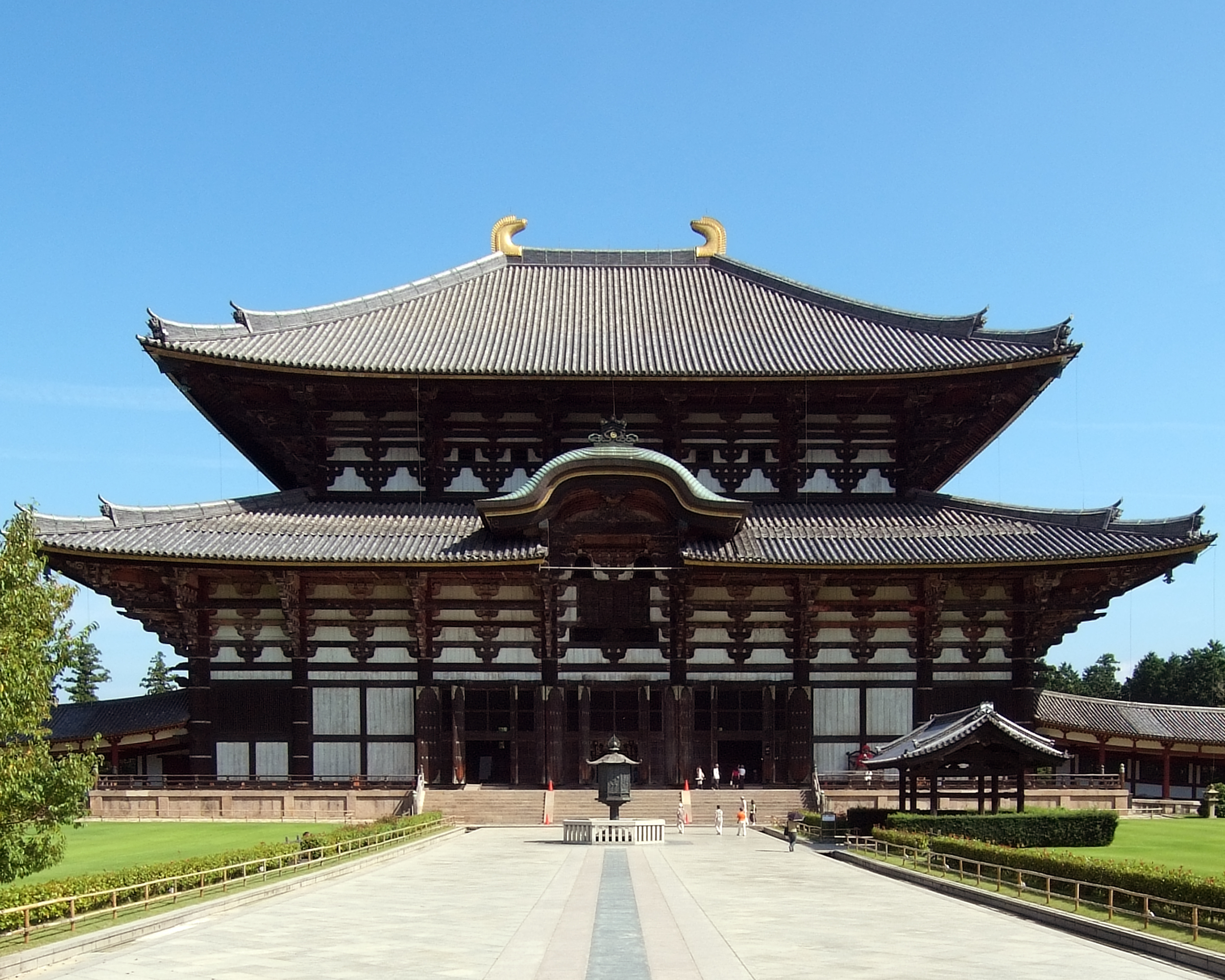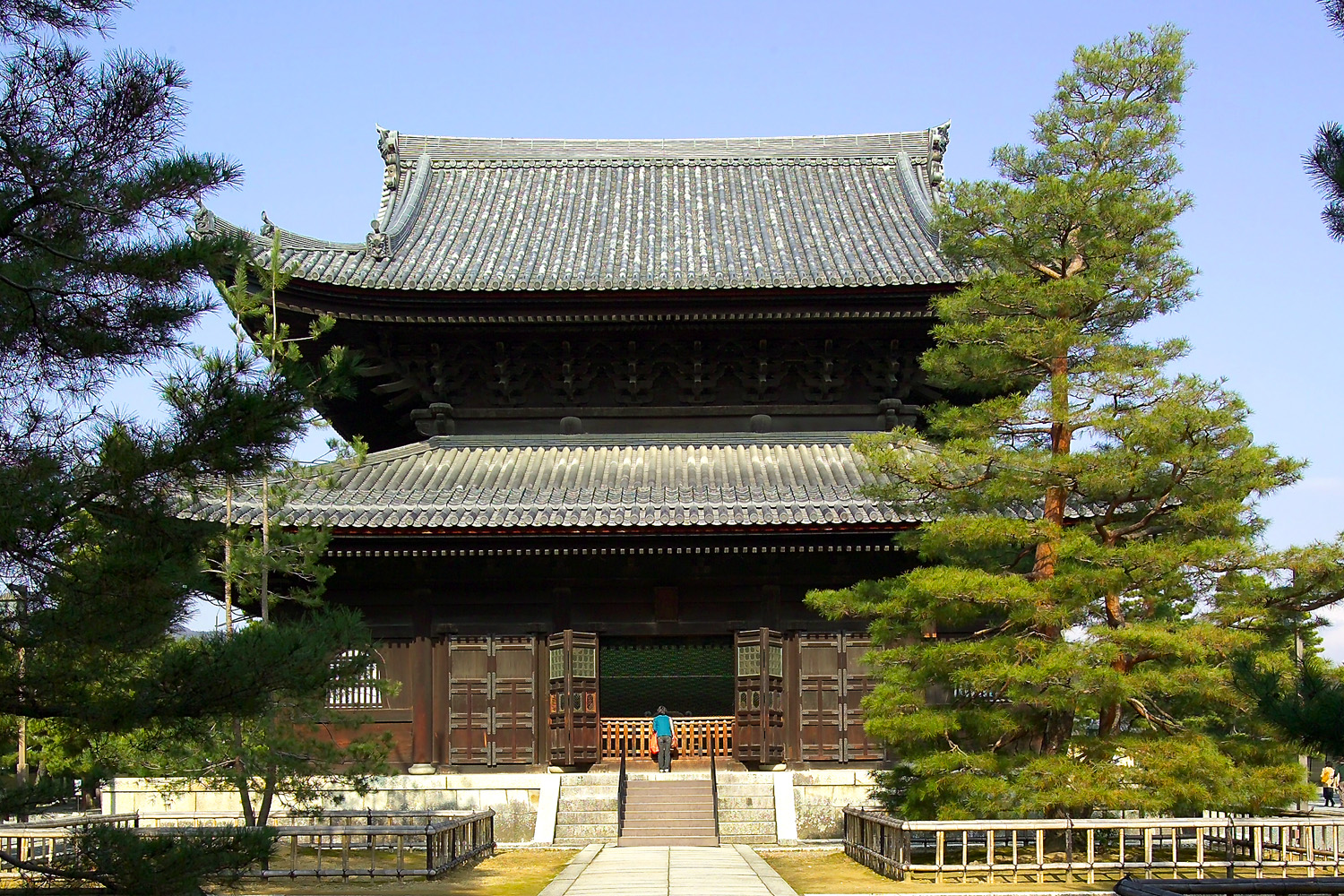Main Hall (Japanese Buddhism) on:
[Wikipedia]
[Google]
[Amazon]
 Main hall is the building within a Japanese Buddhist temple compound ('' garan'') which enshrines the main object of veneration.
Main hall is the building within a Japanese Buddhist temple compound ('' garan'') which enshrines the main object of veneration.
 The or is the main hall of Zen temples of schools such as the
The or is the main hall of Zen temples of schools such as the
File:Horyu-ji11s3200.jpg, Hōryū-ji's ''kondō''
( Japan's National Treasure) File:Kakogawa Kakurinji12n4592.jpg,
(Japan's National Treasure) File:Enryakuji Konponchudo04n4272.jpg,
(Japan's National Treasure) File:Danjogaran Koyasan01n3200.jpg, Mt. Kōya's ''kondō'' on Danjōgaran File:Daigoji Kyoto01s5s4110.jpg, Daigo-ji's ''kondō''
(Japan's National Treasure) File:Kyoto Toji Kondo C0947.jpg, Tō-ji's ''kondō''
(Japan's National Treasure) File:Sanjusangendo temple01s1408.jpg, Sanjūsangen-dō's ''hon-dō''
(Japan's National Treasure) File:Kinpusenji Yoshino Nara02n4272.jpg,
(Japan's National Treasure) File:Ninna Temple Golden Hall.jpg, Ninna-ji's ''kondō''
(Japan's National Treasure)
Japanese Art Net User System
Dictionary of Japanese Architectural and Art Historical Terminology, ''Butsuden'', ''Kondou'', ''Hondou'' entries. Accessed on May 6, 2009 * {{Buddhist temples in Japan Japanese Buddhist architecture
 Main hall is the building within a Japanese Buddhist temple compound ('' garan'') which enshrines the main object of veneration.
Main hall is the building within a Japanese Buddhist temple compound ('' garan'') which enshrines the main object of veneration.Kōjien
is a single-volume Japanese dictionary first published by Iwanami Shoten in 1955. It is widely regarded as the most authoritative dictionary of Japanese, and newspaper editorials frequently cite its definitions. As of 2007, it had sold 11 m ...
Japanese dictionary Because the various denominations deliberately use different terms, this single English term translates several Japanese words, among them ''butsuden'', ''butsu-dō'', ''kondō'', ''konpon-chūdō'', and ''hondō''. ''Hondō'' is its exact Japanese equivalent, while the others are more specialized words used by particular sects or for edifices having a particular structure.
Kondō (Asuka and Nara periods)
The term started to be used during the Asuka and Nara periods. A ''kondō'' is the centerpiece of an ancient Buddhist temple's ''garan'' in Japan. The origin of the name is uncertain, but it may derive from the perceived preciousness of its content, or from the fact that the interior was lined with gold. This is the name used by the oldest temples in the country.Iwanami Nihonshi Jiten A ''kondō'', for example Hōryū-ji's is a true two-story building with a 3x2-bay
A bay is a recessed, coastal body of water that directly connects to a larger main body of water, such as an ocean, a lake, or another bay. A large bay is usually called a Gulf (geography), gulf, sea, sound (geography), sound, or bight (geogra ...
central core ('' moya'') surrounded by a 1-bay wide aisles ('' hisashi''), making it 5x4 bays, surrounded by an external 1-bay wide '' mokoshi'', for a total of 9x7 bays. The second story has the same dimensions as the temple's core at the first story, (3x2 bays), but has no ''mokoshi''.
Some temples, for example Asuka-dera or Hōryū-ji, have more than one ''kondō'', but normally only one exists and is the first building to be built. Because of its limited size, worshipers were not allowed to enter the building and had to stand outside. The ''kondō'' and a pagoda
A pagoda is an Asian tiered tower with multiple eaves common to Nepal, India, China, Japan, Korea, Myanmar, Vietnam, and other parts of Asia. Most pagodas were built to have a religious function, most often Buddhist but sometimes Taoi ...
were usually surrounded by a corridor called ''kairō''.
The use of ''kondō'' declined after the 10th century, when it was replaced by a ''hondō'' divided in and . The term remained in some use even up to the Edo period
The or is the period between 1603 and 1867 in the history of Japan, when Japan was under the rule of the Tokugawa shogunate and the country's 300 regional ''daimyo''. Emerging from the chaos of the Sengoku period, the Edo period was character ...
, but its frequency decreased drastically after the appearance of the term ''hon-dō'' in the Heian period
The is the last division of classical Japanese history, running from 794 to 1185. It followed the Nara period, beginning when the 50th emperor, Emperor Kanmu, moved the capital of Japan to Heian-kyō (modern Kyoto). means "peace" in Japanese ...
.
Hondō (Heian period)
The term The term ''hondō'' is translated as "main hall" in Japanese-English dictionaries. () enshrines the most important objects of veneration. The term is thought to have evolved during the 9th century to avoid the early term ''kondō'', at the time used by six Nara sects: the Nanto Rokushū. It became common after the introduction of the two Mikkyo sects ( Tendai and Shingon) to Japan.JAANUS Various new types of temple buildings, including the ''hondō'', were built during the Heian period, in response to the requirements of new doctrines. Different buildings were called ''hondō'' depending on the sect, for example: the ''kondō'' ( Shingon), the ''chudō'' ( Tendai), ''mieidō'' ( Jōdo), the ''Amida-dō'' (Jōdo Shinshū
, also known as Shin Buddhism or True Pure Land Buddhism, is a school of Pure Land Buddhism. It was founded by the former Tendai Japanese monk Shinran.
Shin Buddhism is the most widely practiced branch of Buddhism in Japan.
History
Shinran ...
). A notable evolution of the ''hondō'' during this period is the inclusion of a space for worshipers inside the ''hondō'' itself, called ''gejin'' (see above).
Other names such as are used as well, for example for the main hall at Mount Hiei's Enryaku-ji
is a Tendai monastery located on Mount Hiei in Ōtsu, overlooking Kyoto. It was first founded in 788 during the early Heian period (794–1185) by Saichō (767–822), also known as Dengyō Daishi, who introduced the Tendai sect of ...
.The hall measures 11x6 bays, of which 11x4 are accessible by the public. The Tokugawa funeral temple of Kan'ei-ji, which had been built explicitly to imitate Enryaku-ji, also had one, though it has not survived.Watanabe (2005:30) Yama-dera in Yamagata is another example of a temple using this name.
''Butsuden'' (Kamakura period)
 The or is the main hall of Zen temples of schools such as the
The or is the main hall of Zen temples of schools such as the Sōtō
Sōtō Zen or is the largest of the three traditional sects of Zen in Japanese Buddhism (the others being Rinzai and Ōbaku). It is the Japanese line of the Chinese Cáodòng school, which was founded during the Tang dynasty by Dòngshān ...
and Rinzai
The Rinzai school ( ja, , Rinzai-shū, zh, t=臨濟宗, s=临济宗, p=Línjì zōng) is one of three sects of Zen in Japanese Buddhism (along with Sōtō and Ōbaku). The Chinese Linji school of Chan was first transmitted to Japan by My ...
. This architectonic style arrived together with Zen during the Kamakura period. There are following types of ''butsuden'' or ''butsu-dō'':
* The simplest is a 3x3-bay square building. A bay
A bay is a recessed, coastal body of water that directly connects to a larger main body of water, such as an ocean, a lake, or another bay. A large bay is usually called a Gulf (geography), gulf, sea, sound (geography), sound, or bight (geogra ...
is the space between two pillars, comparable to a Japanese '' ken'' (181 cm-197 cm). It has no '' mokoshi'' (an enclosure circling the core of the temple covered by a pent roof, usually one bay in width).
* The second type is also 3x3-bay square, but has a 1-bay-wide ''mokoshi'' all around the core of the temple, making it look like a two-story, 5x5-bay building as in the case of the ''butsuden'', visible in the photo on the right.
* It is also known that during the 13th and 14th centuries, very large ''butsuden'' measuring 5x5 bays square having a ''mokoshi'' were built, but none survives. Large size 3x3-bay ''butsuden'' with a ''mokoshi'' however still exist, for example at Myōshin-ji (see photo in the gallery below).
Edo period
In the case of the Ōbaku Zen school that arrived late in Japan, the architecture retained the Ming Chinese style. The ''hondō'' of Ōbaku Zen temples is usually called ,Watanabe (2005:52) An example can be found at Mampuku-ji.Gallery
( Japan's National Treasure) File:Kakogawa Kakurinji12n4592.jpg,
Kakurin-ji
The is a temple of the Tendai sect in Kakogawa, Hyōgo Prefecture, Hyōgo, Japan.
It was established by Prince Shōtoku's instruction in 589.
Kakurin-ji's Taishidō was completed in 1112, and Main Hall (Japanese Buddhism), Main Hall was finis ...
's ''hon-dō''(Japan's National Treasure) File:Enryakuji Konponchudo04n4272.jpg,
Enryaku-ji
is a Tendai monastery located on Mount Hiei in Ōtsu, overlooking Kyoto. It was first founded in 788 during the early Heian period (794–1185) by Saichō (767–822), also known as Dengyō Daishi, who introduced the Tendai sect of ...
's ''Konponchū-dō''(Japan's National Treasure) File:Danjogaran Koyasan01n3200.jpg, Mt. Kōya's ''kondō'' on Danjōgaran File:Daigoji Kyoto01s5s4110.jpg, Daigo-ji's ''kondō''
(Japan's National Treasure) File:Kyoto Toji Kondo C0947.jpg, Tō-ji's ''kondō''
(Japan's National Treasure) File:Sanjusangendo temple01s1408.jpg, Sanjūsangen-dō's ''hon-dō''
(Japan's National Treasure) File:Kinpusenji Yoshino Nara02n4272.jpg,
Kinpusenji
is the head temple of a branch of the Shugendō religion called Kinpusen-Shugendō in Yoshino District, Nara, Yoshino district, Nara Prefecture, Japan. According to tradition, it was founded by En no Gyōja, who propagated a form of mountain as ...
's ''Zao-dō'' (''hon-dō'')(Japan's National Treasure) File:Ninna Temple Golden Hall.jpg, Ninna-ji's ''kondō''
(Japan's National Treasure)
See also
* '' Shichidō garan'' for details about the main hall's position within a temple compound. * TheGlossary of Japanese Buddhism
This is the glossary of Japanese Buddhism, including major terms the casual (or brand-new) reader might find useful in understanding articles on the subject. Words followed by an asterisk (*) are illustrated by an image in one of the photo galle ...
for terms concerning Japanese Buddhism, Japanese Buddhist art, and Japanese Buddhist temple architecture.
* Mahavira Hall, the main hall common in Chinese and Korean Buddhist temples
Notes
References
Citations
Bibliography
* Iwanami Japanese dictionary, 6th Edition (2008), DVD version *''Iwanami Nihonshi Jiten'' (岩波日本史辞典), CD-Rom Version. Iwanami Shoten, 1999-2001. * ''The Evolution of Buddhist Architecture in Japan'' by Alexander Soper 1978,Japanese Art Net User System
Dictionary of Japanese Architectural and Art Historical Terminology, ''Butsuden'', ''Kondou'', ''Hondou'' entries. Accessed on May 6, 2009 * {{Buddhist temples in Japan Japanese Buddhist architecture